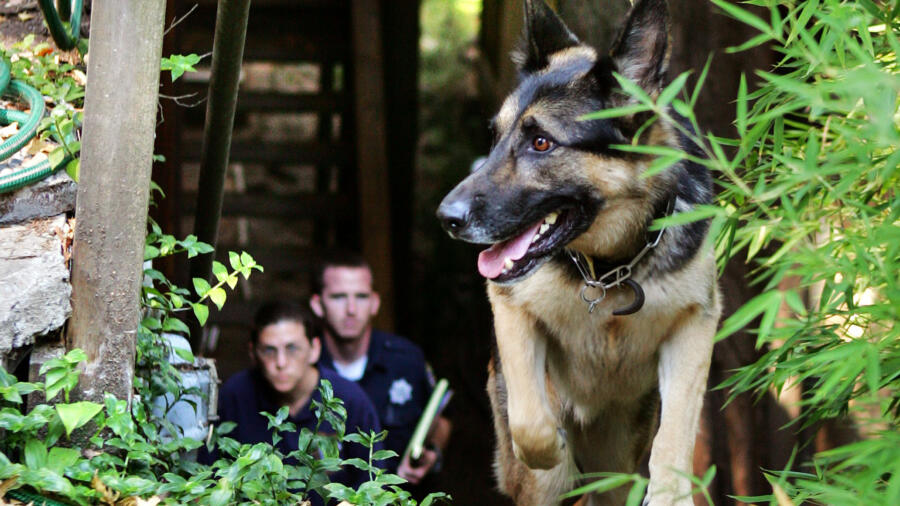It begins with a shift in the wind, a twitch of a nose, and a body stiffening with alert. Deep in the woods, a dog stops mid-step, tail curled, eyes locked on nothing visible—but unmistakably there. To the trained handler, the signal is clear: “Cadaver scent.”
This is the haunting yet heroic world of cadaver dogs—specially trained canines who use their extraordinary sense of smell to solve crimes and bring long-awaited closure to grieving families.
They are more than man’s best friend. They are justice’s secret weapon.
When the Nose Knows: How Cadaver Dogs Solve Crimes
With noses 10,000 to 100,000 times more sensitive than a human’s, cadaver dogs detect the scent of human decomposition even when buried under concrete or submerged in water. Some have sniffed out remains 15 feet below ground, others through hurricane rubble, frozen soil, or the aftermath of fires.
Their detection success rate? As high as 95%, according to search-and-rescue experts.
But what truly sets them apart is what they bring that technology can’t: intuition, precision, and the ability to lead detectives directly to the truth.
Case in Point: Caylee Anthony and the Power of the Scent
When 2-year-old Caylee Anthony vanished in 2008, it was a cadaver dog that offered the first chilling clue. The dog hit on two locations—a spot in the Anthony family’s backyard, and the trunk of her mother’s car. Though Caylee’s body wasn’t immediately recovered, the scent of decomposition lingered, becoming key evidence that shaped one of the most high-profile murder trials in recent history.
Cadaver dogs don’t need a full body. Sometimes a bone fragment, a tooth, or even residual scent molecules is enough.
The Unlikely Heroes: Who Are Cadaver Dog Handlers?
Many handlers, like Cat Warren, a former journalist turned canine handler, start with a single dog and a personal mission. Her German shepherd, Solo, had too much drive and aggression for everyday obedience. But in the world of cadaver recovery, he was a natural.
In her bestselling book What the Dog Knows, Warren describes how dogs like Solo often train their handlers, not the other way around.
These teams are frequently volunteers, unpaid but unwavering in their dedication. They spend weekends in deep woods, disaster zones, and old crime scenes, working alongside local law enforcement—not for glory, but for closure.
Training the Nose: From Scent Discrimination to Courtroom Testimony
Training a cadaver dog is an intense, months-long process that begins with exposing dogs to the unique chemical signatures released by human decomposition—called volatile organic compounds (VOCs).
Unlike search dogs looking for live people, cadaver dogs must distinguish between:
- Human vs. animal remains
- Fresh vs. aged decomposition
- Residual scent vs. presence of a body
Dogs are exposed to teeth, bones, dried blood, and even aged remains—sometimes decades old. One seasoned handler said, “We’ve had dogs find remains from the Iron Age.”
Breed Doesn’t Matter—Drive Does
You might think only German shepherds or bloodhounds make the cut—but that’s a myth.
Great cadaver dogs have come in the form of border collies, Labradors, boxers—even rescued mutts. What matters is their prey drive, stamina, focus, and an unstoppable love of the hunt.
In many cases, these dogs work well past age 10. With regular retraining and care, they become veteran detectives whose instincts sharpen with every search.
Not Just a Nose—A Legal Force
Their findings don’t just end at the scene—they’re often presented in court. Detailed handler logs, search patterns, and alert behaviors are all scrutinized during trials. A handler must defend their dog’s reliability under cross-examination.
As Cat Warren emphasizes: “Training should include failure—because proving progress builds credibility. Judges want to see that your dog can distinguish success from mistake, and get better over time.”
Unforgettable Cases, Unshakable Bonds
Handlers never forget certain searches. One team spent five years on a single case—only finding remains when the dog gave a subtle signal in an overgrown ravine.
Another handler describes the silence that follows a “final find”—the moment when a dog’s alert means the search is over, and a family’s nightmare moves toward resolution.
These dogs don’t just find the dead. They give the living a path forward.
The Ethics of Using Cadaver Dogs
As demand rises for their abilities, so does the conversation around ethics and boundaries. Should dogs be used in unconfirmed missing person cases? How do we guard against misinterpretation?
That’s why handlers are rigorous about continuing education, certification, and accountability. They know: a false alert can derail a case, but the right one can bring justice to the voiceless.
Final Thoughts: The Unsung Canines of Justice
Cadaver dogs don’t wear capes. They don’t bark at cameras or chase the bad guys. They work quietly, often in the shadows, led only by scent—and the steady hand of a human partner who trusts them completely.
In the search for justice, they are relentless, tireless, and unshakably loyal.
And when they find what no one else can, their message is silent but clear:
“Here. Here is the truth.”

